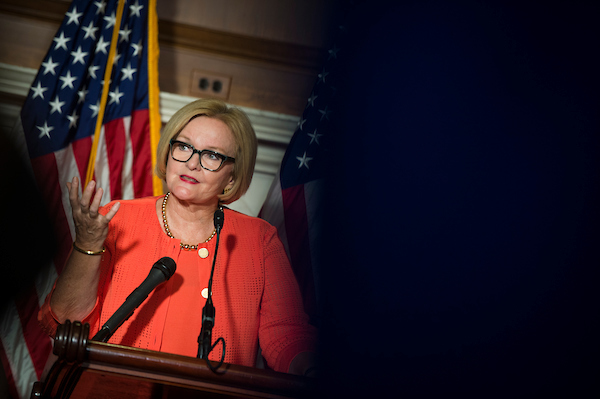Breaking the Midterm Mode: Both Parties Make it About Trump
2018 provides yet another departure from political norms

ANALYSIS — For decades, the rule of thumb for campaigns during midterm elections has been the same: When the president is popular, the president’s party tries to nationalize the election, and the opposition attempts to localize it. On the other hand, when the president is unpopular, his party’s nominees try to localize while the opposition tries to make the election a national referendum on his performance. Perhaps not surprisingly, 2018 has broken that mold.
Both sides are trying to nationalize the November election.
President Donald Trump’s job approval rating sits somewhere between 38 percent and 42 percent, a level that in the past would have kept him locked up in the White House or doing private fundraising events throughout the election year. And yet, the president continues to fly around the country to attend rally after rally.
True, the rallies tend to be in pro-Trump areas, but the coverage of those events and the president’s public schedule make him the center of attention nationally.
Moreover, Trump goes out of his way to argue that the midterms are about him, that voting for Republican candidates is the same thing as voting for him.
Also Watch: Trump Suggests ‘Rogue Killers’ Could Be Responsible for Saudi Journalist’s Death
Perhaps we shouldn’t be all that surprised that Trump wants to make the 2018 elections about him. He seems to think that everything is about him.
Anyway, this odd situation whereby both parties are trying to make the upcoming election about Trump obviously follows from the polarization in the country.
Both approval and disapproval of the president are stunningly intense.
Three out of four respondents in a Sept. 16-19 NBC News/Wall Street Journal poll either strongly approved or strongly disapproved of Trump’s performance.
Because of that — and because of the Senate map, which includes a number of pro-Trump, pro-Republican states with Democratic incumbents — both national parties essentially are trying to nationalize the election.
For years now, party strategists have been obsessed with base turnout. While Trump lost the popular vote two years ago, his Electoral College victory and his reliance on higher turnout voters (e.g., white voters and older voters) have fueled GOP optimism about 2018.
Many Republican strategists have argued that if they can get their voters to turn out, as they did in 2016, the party can hold the House and expand its Senate majority.
Democrats, on the other hand, believe that weaker-than-anticipated base turnout last time cost Hillary Clinton the presidency, and the party needs only to boost its numbers among younger voters, minority voters and progressives to produce a blue wave — particularly if college-educated, suburban women are fleeing GOP candidates this year.
Given strategists’ assumptions, nationalizing the midterms seems to accomplish what both parties want — to encourage turnout among base voters.
But the nationalizing strategy has also made it much more difficult for party officeholders in the political center and who need to localize their races if they are going to have any chance of winning.
Republican incumbents in non-Trump districts, such as Virginia’s Barbara Comstock and Colorado’s Mike Coffman, have no chance of surviving a nationalized election next month.
They — and two-dozen other House Republicans seeking re-election or open seats — need to run on their own accomplishments and personal connections to district voters, but they can’t do that if the entire midterms are about Trump.
The Democratic Congressional Campaign Committee has already run a TV spot mocking Coffman’s promise to “stand up to Trump,” as well as a spot that labels Comstock “Barbara Trumpstock” because of her support for the president’s agenda.
DCCC ads in two Twin Cities districts, held by Republicans Jason Lewis and Erik Paulsen, specifically link those two incumbents to the president. And those are just the tip of the iceberg.
Trump has essentially thrown pragmatic incumbent House members under the bus by making himself the focus of the midterms.
At the same time, of course, Trump has made it more difficult for Democratic senators seeking re-election in GOP-friendly states such as North Dakota and Missouri.
Heidi Heitkamp won election narrowly six-years ago by portraying herself as a “North Dakota Democrat,” not a “national Democrat,” but that is a much heavier lift this year, when everything is about Trump and the two parties.
I recently wrote that this election will rob the GOP of many of its more moderate and pragmatic members, making the party more conservative and less willing to compromise. The Democrats may become a more diverse group because the party will add both suburban pragmatists and progressives who embrace “social democracy.”
But the election will do something else. It will pull the two bodies of Congress further apart. The Senate majority will be even more the chamber of Trump, while the House will lead the opposition to him. In a system of checks and balances, that is not a prescription for getting legislation enacted.





